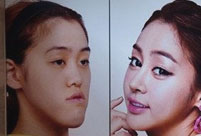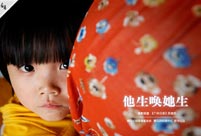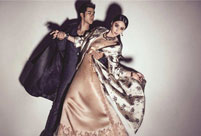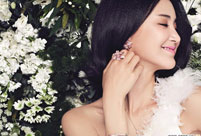Jade's basic color is creamy white, opaque and waxy. Mineral elements, such as iron, chromium and magnesium, create colors including shades of apple and spinach green, violet, yellow, orange, red, white, brown and black. Generally the value of the mineral is determined by color, intensity, luster, clarity and translucence or transparency.
Jadeite is also called emerald (fei cui 翡翠) because some pieces are deep emerald in color and translucent.
This kind of intense green jade is rare, extremely valuable and coveted today.
Jade carvings as works of art tend to be traditional and stereotypical in shape and subject, such as animal signs of the Chinese zodiac, but some artists are trying to create new jade art.
One of them is jade artist Wang Junyi, who is challenging conventional approaches to jade jewelry and art.
Born in Guilin in Guangxi Zhuang Autonomous Region, Wang graduated from a jewelry art school at the age of 16. Four years later, he decided that his career would be jade.
"I have an emotional link with jade," says 38-year-old Wang, recalling that his mother inherited a jade bracelet from her mother and treasured it. "She kept it in locked drawer and wouldn't even let me see it, so jade remained mysterious in my heart."
As a boy, Wang decided that one day he would be able to "play" freely with jade. "It seems that my hope has come true," he says.
Wang says that compared with nephrite, jadeite is harder and more suitable to shape. He uses abasion tools.
"The natural brilliant colors are like a ready-made palette where my knife is the brush," he says.
Wang is not satisfied being simply a craftsman.
"Sometimes I wonder why so many young Chinese would rather pay a lot of money to buy jewelry from Cartier, Tiffany or Bvlgari," he says. "It's time for jade to have a new look, catering for the urban aesthetic."
Society is changing so fast that new shapes and subjects are needed; repeating ancient versions is no longer enough, he says.
One of his highly praised works is a butterfly shaped from a piece of jadeite that gradually "changes" colors. The body is green, while the delicate wings are a pale, translucent orange with intricate details.
"This is not the traditional butterfly that you would find on jade," Wang says. "I practiced a lot to master traditional carving skills, while at the same time I tried to forget conventional shapes."
Wang attends many art, gemstone and jewelry exhibitions and reads widely about contemporary art.
"If you want to break all the shackles, you have to dig deeper," he says.
He aims to fuse a contemporary flavor into the ancient stone craft.
Wang is a pioneer in creating contemporary jade works or "installations."
His one-meter-tall work "The Unlimited Power of Buddhism" combines jade with a titanium alloy. The Buddha is made of deep green jade attached to a titanium tree-shaped structure dotted with colored beads and tiny LED screens.
"I am very interested in titanium and jade, one is a new material and the other is an ancient one. The striking contrast broadens the cultural meaning of jade," he says.
In 2012, Wang was the first jade artist to hold a solo exhibition at the National Museum of China in Beijing. Chen Lusheng, the museum's vice director, said, "I don't regard Wang as a traditional jade craftsman, but an artist filled with creativity and ideas."
In 2011, Wang cooperated with Italian jewelry designer Fulvio Maria Scavia to combine jade with European jewelry.
"I want to spread the appeal of jade to people outside China, because jade is the Chinese jewelry that merits an international stage," the artist says.

 Gallery: Reveal the South Korean beauty production line
Gallery: Reveal the South Korean beauty production line Army aviation brigade in actual-troop drill
Army aviation brigade in actual-troop drill Top 10 Chinese provinces for the well-heeled
Top 10 Chinese provinces for the well-heeled  Baby born to save his sister - the story of a savior sibling
Baby born to save his sister - the story of a savior sibling Lady of mystery: Female SWAT team in prison disclosed
Lady of mystery: Female SWAT team in prison disclosed  Single mother, baby live in KFC restaurant for months
Single mother, baby live in KFC restaurant for months Fan Bingbing poses for Malaysian magazine Citta Bella
Fan Bingbing poses for Malaysian magazine Citta Bella Zhang Xinyi covers COSMOPOLITAN
Zhang Xinyi covers COSMOPOLITAN A collection of bizarre rooftop buildings around China
A collection of bizarre rooftop buildings around China Most significant architectural wonders
Most significant architectural wonders China, U.S. conduct joint anti-piracy drill
China, U.S. conduct joint anti-piracy drill  'Abandoned' life in cement boats in Huai River
'Abandoned' life in cement boats in Huai River 2013 Taiwan Int'l Tourism Expo kicks off in Taipei
2013 Taiwan Int'l Tourism Expo kicks off in Taipei Photo story: Take a gap year
Photo story: Take a gap year Nokia's Global Headquarters: visiting a declining empire
Nokia's Global Headquarters: visiting a declining empireDay|Week|Month